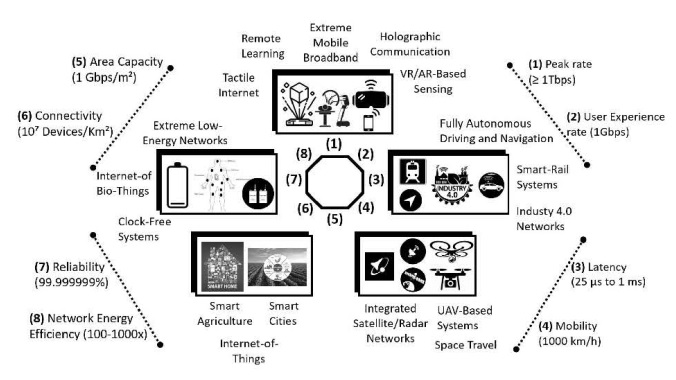Most Downloaded September 23, 2021

Published in July 2021
Authors
H. Tataria, M. Shafi, A. F. Molisch, M. Dohler, H. Sjöland, and F Tufvesson
Abstract
Mobile communications have been undergoing a generational change every ten years or so. However, the time difference between the so-called “G’s” is also decreasing. While fifth-generation (5G) systems are becoming a commercial reality, there is already significant interest in systems beyond 5G, which we refer to as the sixth generation (6G) of wireless systems. In contrast to the already published papers on the topic, we take a top-down approach to 6G. More precisely, we present a holistic discussion of 6G systems beginning with lifestyle and societal changes driving the need for next-generation networks. This is followed by a discussion into the technical requirements needed to enable 6G applications, based on which we dissect key challenges and possibilities for practically realizable system solutions across all layers of the Open Systems Interconnection stack (i.e., from applications to the physical layer). Since many of the 6G applications will need access to an order-of-magnitude more spectrum, utilization of frequencies between 100 GHz and 1 THz becomes of paramount importance. As such, the 6G ecosystem will feature a diverse range of frequency bands, ranging from below 6 GHz up to 1 THz. We comprehensively characterize the limitations that must be overcome to realize working systems in these bands and provide a unique perspective on the physical and higher layer challenges relating to the design of next-generation core networks, new modulation and coding methods, novel multiple-access techniques, antenna arrays, wave propagation, radio frequency transceiver design, and real-time signal processing. We rigorously discuss the fundamental changes required in the core networks of the future, such as the redesign or significant reduction of the transport architecture that serves as a major source of latency for time-sensitive applications. This is in sharp contrast to the present hierarchical network architectures that are not suitable to realize many of the anticipated 6G services. While evaluating the strengths and weaknesses of key candidate 6G technologies, we differentiate what may be practically achievable over the next decade, relative to what is possible in theory. Keeping this in mind, we present concrete research challenges for each of the discussed system aspects, providing inspiration for what follows.